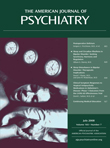Prevalence and Correlates of Shoplifting in the United States: Results From the National Epidemiologic Survey on Alcohol and Related Conditions (NESARC)
Abstract
Objective: This study presented nationally representative data on the lifetime prevalence, correlates, and comorbidity of shoplifting among adults in the United States. Method: Data were derived from a large national sample of the United States population. Face-to-face surveys of more than 43,000 adults ages 18 years and older residing in households were conducted during the 2001–2002 period. Diagnoses of mood, anxiety, and drug disorders as well as personality disorders were based on the Alcohol Use Disorder and Associated Disabilities Interview Schedule—DSM-IV Version. Results: The prevalence of lifetime shoplifting in the U.S. population was 11.3%. Associations between shoplifting and all antisocial behaviors were positive and significant. Besides stealing, the behaviors more strongly associated with shoplifting were making money illegally and scamming someone for money. Strong associations between shoplifting and all 12-month and lifetime comorbid psychiatric disorders were also found. The strongest associations with shoplifting were with disorders often associated with deficits in impulse control, such as antisocial personality disorder, substance use disorders, pathological gambling, and bipolar disorder. High rates of mental health service use were also identified in this population. Conclusions: Shoplifting is a relatively common behavior. A history of shoplifting is associated with substantial rates of comorbid disorders, psychosocial impairment, and mental health service use. Future research should identify the biological and environmental underpinnings of shoplifting and develop effective screening tools and interventions for individuals with shoplifting problems.



